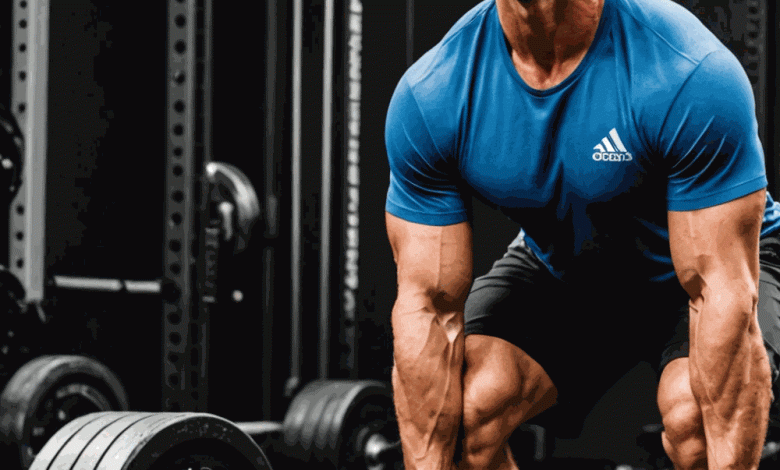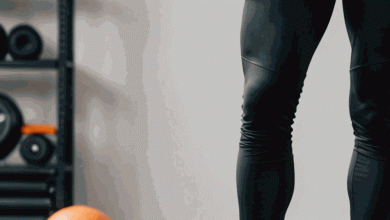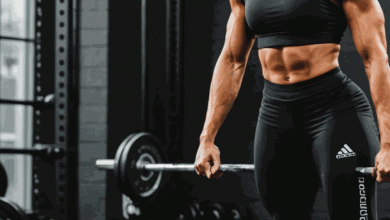Master Perfect Deadlift Form in 5 Simple Steps


Creating the Pillar: Aligning Your Body Properly
Deadlifts might seem intimidating, but they don’t have to be. In just five super simple steps, I’ll show you exactly how to deadlift with the proper form to unlock your untapped strength, maximize your growth potential, and minimize the risk of injury. The first step is to create a strong foundation by aligning your body. Let’s get started!
To begin, walk up to the bar and align it right over your shoelaces in the middle of your foot. Widen your feet to about hip-width apart with your toes facing forward. For most people, this is the best foot stance. However, if it feels uncomfortable later on, you can adjust by widening your feet or pointing your toes outward. Next, we need to fix your hips and ribs into the correct position.
Think of your hips as a bowl filled with water. Most people tend to stand with an anterior pelvic tilt, causing the water to spill over the front of the bowl. Instead, tilt your pelvis back so that the bowl becomes flat. Imagine bringing your belt buckle up to your chin. As for your ribs, most people stand with them flared out. Flatten them by engaging your core. Your hips and ribs should be stacked evenly on top of each other.
To maintain this position, squeeze your glutes and inner thighs together. This will help lock your hips and ribs into place. Additionally, make a fist in each hand and push them down towards the ground. This will straighten your arms and activate your lats. By now, your glutes, inner thighs, core, and lats should all be engaged and ready for the next step.
Grabbing the Bar: Maintaining Tightness and Alignment
When grabbing the bar, many people round their back and shoulders, losing the tightness they’ve worked so hard to create. We want to avoid this. Instead, keep the pillar we created in step one intact. Start by pushing your hips back while keeping your fists pushing straight down under your shoulders. This will help maintain proper alignment.
Imagine you have a bag full of groceries in each hand and you’re trying to close the car door with your butt. Keep pushing your hips back without lifting your big toes off the ground. Losing pressure in the big toe indicates pushing your hips back too far. Bend your knees and bring your shins to the bar, ensuring you can hook your hands just outside your knees.
Before moving on to the next step, there are a few things to look out for. Make sure the bar is directly over your midfoot, with your shins lightly touching it. Your hips should be above your knees but below your shoulders. Maintain a neutral spine, including your neck. Draw your head back and pick a spot on the floor a few feet in front of you. Your head should extend in the same line as the rest of your back.
Creating the Wedge: Protecting Your Lower Back
The next step is to create the wedge, which will protect your lower back during the deadlift. To do this, drive your knees out against your arms. Take a deep breath, expanding your core as if you were wearing a belt and trying to push air against all sides of it. Brace your core as if someone were about to punch your stomach.
To prevent rounding in the upper back and shoulders, extend your chest and imagine getting taller from your hips to your head. Squeeze your armpits as if you had oranges in them and were trying to make orange juice. These actions will activate your lats. If done correctly, you should feel tension in your lats, core, glutes, and hamstrings.
Pushing: Initiating the Deadlift with Proper Form
Now it’s time for the moment you’ve been waiting for pushing. Many people make the mistake of thinking of the deadlift as a pull, which often leads to breaking the proper form created in the previous steps. Instead, think of your arms as ropes with hooks at the end, just hanging onto the bar. Rather than jerking the weight off the floor, maintain the tightness from step three and focus on pushing the floor away with your feet.
Continuously push harder and harder until the bar lifts off the ground. The key is to ensure that your hips and chest rise at the same rate. This will prevent your lower back from rounding. Once the bar passes your knees, drive your hips forward by thrusting them or “humping” the air in front of you. However, be mindful not to overextend your lower back. Your shoulders should not be behind your heels, and your lower back should not be arched.
Maintain a neutral spine and keep your glutes squeezed together at the top of the lift. Your hips, ribs, shoulders, and chin should all be stacked in a parallel line, like floors of a building. If executed correctly, you should feel a slight pump in your lats, hamstrings, and glutes. It’s normal to also feel your lower back muscles working, but be cautious not to overload them with too many back-demanding exercises in a single workout.
Descending: Controlling the Weight on the Way Down
The descent is just as important as the ascent, but many people neglect it by letting gravity drop the weight. To control the weight correctly, push your hips back and slide the bar down along your thighs as close as possible. Once the bar passes your kneecaps, bend your knees and slide the bar along your shins to get it back over your midfoot.
Avoid bouncing the weight off the floor. Instead, stay tight and gently touch the floor with the weight before starting the next repetition. This controlled descent ensures that you maintain tension and maximize muscle growth.
Congratulations! You’ve now mastered the perfect deadlift. It’s not as scary as it may seem at first. By following these five simple steps, you can enhance your deadlift technique and reap the benefits of increased strength and muscle growth.
What other exercises are you struggling with? Let me know in the comments below. I’ll be covering various exercises in my upcoming videos, and I’d love to hear what you’d like to see next. Stay tuned for more exercise tips and remember to check out our website, BuildScience.com, for a detailed workout program tailored to your needs. Start maximizing your gains while minimizing the risk of injuries!



